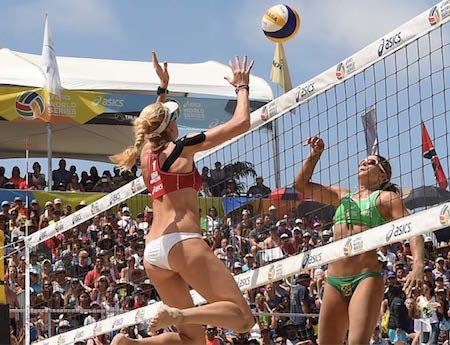AT&T: Live Sports Will Drive 4K

Live sports will be a key cog in the engine pushing the nascent, pixel-packed 4K format forward in the coming years, in the view of the company behind the nation’s top satellite-TV provider.
“We really believe that live sports is what’s going to drive the 4K audience,” John Ward, senior vice president of content operations at AT&T, said.
DirecTV, acquired by AT&T last summer, has been putting that notion to the test with a 4K channel (106) launched in April that features live sports and special events. That’s complemented by channel 104 (a curated 24/7 channel featuring general entertainment content, including fare from the in-house production group Audience Network), and channel 105 (a pay-per-view movie channel that includes a library of new releases and classic titles).
Ward estimates DirecTV has delivered more than 500 hours of live 4K coverage so far. That started with select coverage of the Masters in April, and has since expanded to several Major League Baseball games, the PGA Championship, the Byron Nelson Pro-Am tournament, and, most recently, three days of coverage from the World Series of Beach Volleyball from Long Beach, Calif.
The latter “looked as good as anything we’ve done in 4K,” Ward said. “It turns out that sand and ocean really play nicely. 4K really brought the beach to life.”
Still, 4K, and live 4K in particularly, “is still a bit of a science experiment,” he admits, citing everything from the acquisition, transmission and distribution of those signals.
Some of that experimentation was evident when DirecTV had to delay its plans to begin live coverage of about two dozen Major League Baseball games back in April.
Broadcasting & Cable Newsletter
The smarter way to stay on top of broadcasting and cable industry. Sign up below
Lots of improvements have been made, though, especially in terms of the technical check-in step, where DirecTV sends test signals back to the broadcast center.
“Baseball has gotten to the point where we are doing this within a couple of hours, whereas where we started it was a long, laborious process—you’re talking five or six hours,” Ward said. “With live, there are no do-overs. You’ve got to be ready. They’re going to play the game whether we’re ready or not.”
Other improvements have come way in DirecTV’s ability to stitch together the four quadrant feeds (four 3 gigabit-per-second SDI signals for a total of 12 Gbps) and ensuring that they are all encoded and synched up property. That component “is mission critical,” and one of the early lessons learned with the 4K baseball coverage, Ward said.
New tools allow for improved measuring and timing of those quadrants, alongside enhancements with the techniques used to build the contribution encodes that are sent from the site to the broadcast center.
“They [the suppliers] have stepped up; it’s all getting easier,” said Ward, a former Fox Sports executive who had a front-row seat during the industry’s transition to HDTV. “It’s like anything in the TV world—you get better every time you do it and eventually we got our shorts on straight with baseball.”
AT&T and DirecTV haven’t disclosed how many viewers are accessing the 4K feeds, which require a 4K-capable TV (The Digital Entertainment Group estimates that about 8 million 4K sets have been sold in the U.S.), as well as the DirecTV Model HR54 HDDVR receiver. Those customers must also be on DirecTV’s Ultimate or Premiere package.
“It’s in the early stages, and it’s growing,” Ward said.
DirecTV has been leading the way with 4K among U.S. MVPDs. But others are working on it. Comcast is developing a 4K box for its X1 platform called the Xi6, but, for the moment, only offers a streaming app on LG and Samsung TVs that features a small sampling of 4K content. Dish Network is getting into the game with its 4K-capable Hopper 3 and 4K Joey devices. “I think it’s a differentiator for us; it’s a selling point,” Ward said of 4K.
While AT&T/DirecTV remains bullish on 4K, Ward said it’s still too early to pull the trigger on High Dynamic Range (HDR), a format that produces brighter, more vivid images that can be applied to both 4K and HD video.
Potential issues include backwards-compatibility with TVs that don’t support HDR, as well as the emergence of multiple HDR standards, including Dolby Vision and HDR10.
“I think the industry agrees that HDR is where we need to get to. We’re all testing [it],” he said. “But there’s really no definitive path yet.”
